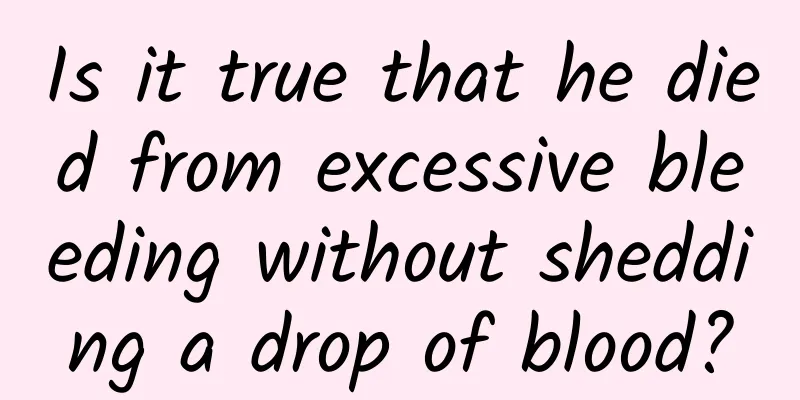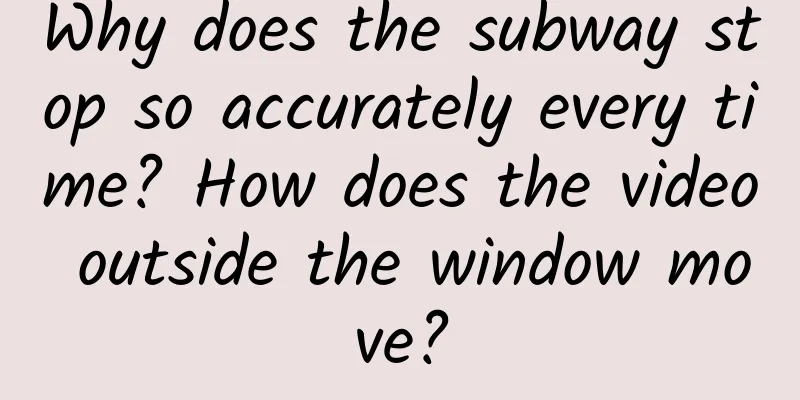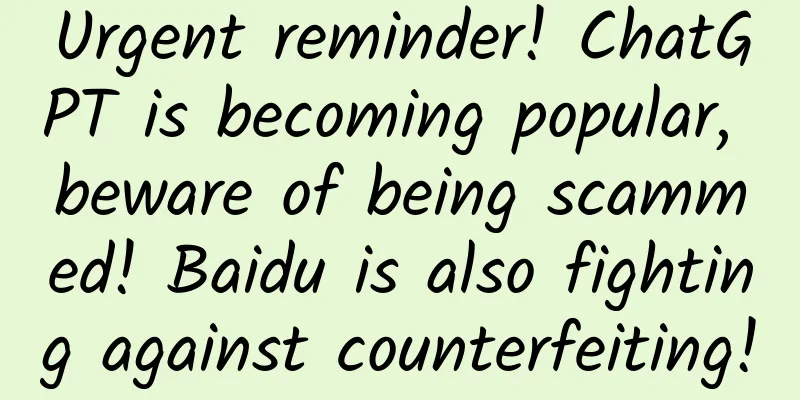Is it true that he died from excessive bleeding without shedding a drop of blood?

|
You may have heard this story, or a similar version: Someone conducted an experiment on a prisoner who was about to be hanged. They fixed the prisoner and cut a wound on his wrist, letting the blood drip into a bucket, and then blindfolded the prisoner. Then the experimenter turned on the faucet and let the water drip into another bucket. The prisoner mistakenly thought that the sound of dripping water was the sound of his own blood dripping, and died not long after, and his death was the same as that of excessive blood loss. But in fact, the wound on the prisoner's hand had already clotted, and it was not enough to kill him. Image | Pixabay Is this story true? Is it really possible that such a scenario could result in someone's death? As far as the current research is concerned, the authenticity of this story is not completely clear. As for whether such a scene would cause death, the answer is that it is possible in some extreme cases. The story may be false But people may really be "scared to death" This story has been mentioned in many places. A widely circulated statement is that an American psychologist named Martin Garrard conducted the experiment, but if further verification is carried out, it will be found that there is no such scientist, let alone his life record. Bernard Lown, a professor emeritus at the Harvard School of Public Health and a famous cardiologist, also mentioned this story in his book The Lost Art of Healing: Practicing Compassion in Medicine, which was first published in 1996. He pointed out that the case came from an Indian medical journal, but the name of the journal was not mentioned in the book, and the specific article could not be found for the time being. Bernard Long and his writings | hsph.harvard.edu So for now, this story still lacks an absolutely reliable source of information, and we can only doubt its authenticity. What I want to talk about here today is the second question, that is, if we put aside the ethical concerns, assuming that such a scenario really exists, is it possible for a person to die because of such a thing? 'Scared to death' Psychological expectations lead to physiological reactions In fact, similar plots are often borrowed in film and television dramas—— In the drama, the victim is made to think that he is at the scene of a fire through magic | TV series "The Fantasy Night of Tang Dynasty" Of course, movies and TV shows usually have elements of fantasy or exaggeration, but in essence, all similar plots describe an inexplicable death. Throughout the process, the deceased believed that he was in a terrifying scene before his death, and eventually died in this simulated horror. In 1942, American physiologist Walter Bradford Cannon published an article and proposed the concept of "Voodoo death". The so-called Voodoo death, also known as "voodoo death", is a sudden death caused by psychological suggestion and emotional shock. Cannon hypothesized that fear can affect a person and make his physical condition worse due to psychological distress. Compared with simply being "scared to death", this kind of death usually presents physiological manifestations related to the environment, the things one is exposed to, psychological expectations, etc., such as the prisoner mentioned above who appeared to have died of excessive blood loss. Therefore, voodoo death actually describes a kind of psychogenic death or psychosomatic death. If someone dies of being frightened to death, the cause of death is usually similar, but a "voodoo death" can have different causes | Pixabay Cannon also listed many such examples in the article. For example, he mentioned a Maori woman who had eaten some fruits, but was later told that these fruits came from a forbidden area. She then felt that the soul of God would kill her, and she died at noon the next day. For example, the article talks about a North Queensland Aboriginal named Rob. After a witch doctor pointed at his bones (local people believe that having a witch doctor point at your bones means imminent death), he suddenly became very weak. But when the witch doctor clarified that it was a misunderstanding, he quickly recovered. Image | giphy.com These examples all come from backward and strongly superstitious places. Cannon also mentioned that this phenomenon of death is very special and is strange and even unbelievable to people living in civilized society. At that time, Cannon also proposed a possible physiological mechanism behind this death, but this mechanism was later considered wrong. Many scholars also questioned the authenticity of the case in the article, and even pointed out that this death cannot be fully explained by the "psychological-physiological" connection. But surprisingly, over the years, Cannon's hypothesis that "psychological distress can cause real physiological reactions" has not been overturned, but has been filled in, explained, and generally accepted. Many researchers have even tried to explain its physiological basis through imaging and other methods. Nocebo Effect Many researchers believe that voodoo death is an extreme form of the nocebo effect. You may know about the placebo effect, but you may not have heard of the nocebo effect. For example, a sugar pill without any drug ingredients is given to a patient without his knowledge, but the patient's condition improves. This is the placebo effect. In contrast to the placebo effect, the anti-placebo effect works through negative assumptions and conditions, such as a lactose-free drink causing the same stomach symptoms in a lactose-intolerant patient. The nocebo effect is the placebo effect's 'evil twin' | npr.org Researchers often refer to the nocebo effect as the placebo effect's "evil twin." Think of it this way: just as the placebo effect is about a positive response or treatment effect arising from an inert or fake treatment, the nocebo effect is about a negative or harmful response arising from a harmless treatment. Some strange and extreme medical phenomena may be attributed to the nocebo effect, such as headaches, dizziness, or allergy-like symptoms caused by being in a Wi-Fi environment. You may be skeptical and think that this magical effect only exists in imagination, but more and more research tells us that although it is unpredictable and counterintuitive, it really exists. In fact, whether it is the placebo effect or the anti-placebo effect, they not only cause psychological changes, but also have real physiological reactions. Your discomfort Maybe it comes from your expectations At present, the anti-placebo effect is mainly reflected in the side effects of medical treatments and pain-related research. In 2013, an article published in the British Medical Journal (BMJ) pointed out that for some people, the side effects of taking cholesterol-lowering statins may outweigh their benefits. The report also highlighted the most significant side effect of statins - muscle pain. The article caused a storm in the UK, and many online media's one-sided interpretation of the study led to about 200,000 patients stopping taking the drug within 6 months, and the reporting rate of side effects increased significantly. In fact, the side effects reported after taking statins are more related to the nocebo effect. In 2017, a two-year follow-up study of 10,180 people published in The Lancet showed that if patients and doctors knew that they were taking statins, the proportion of muscle-related adverse events reported would be significantly higher than when they were unaware. Photo | news.umich.edu Before this large-scale study, many studies had actually discovered and reported similar phenomena. A study randomly assigned 120 patients with benign prostatic hyperplasia but normal erectile function to receive finasteride treatment to relieve symptoms of prostate disease. Half of the participants were told that the drug might cause adverse reactions such as erectile dysfunction, while the other half were not informed. In the end, 43.6% of the first group reported that they had experienced one or more side effects, while only 15.3% of the unaware group reported side effects. Based on the results of another large prospective study - the maximum percentage of side effects after one year of finasteride use was 15%, the researchers believed that the data of the first group deviated from the actual situation. The British Medical Journal also reported that among patients with arm pain who received fake treatment, nearly one-third of the drug group (actually sugar pills, not real medicine) reported symptoms such as drowsiness, dry mouth, and restlessness, and nearly one-quarter of the acupuncture group (the needles were retractable and the subjects were not really pricked) reported pain, swelling, and redness at the acupuncture site. These side effects are exactly what the patients were told they might encounter. Image | Pixabay The study published in Science Translational Medicine supported this clinical observation with neuroimaging methods. When healthy participants who were exposed to thermal pain were told that the analgesic administration was interrupted, the pain index reported by the subjects rose from 39 to 64, even though the administration was actually continuing. At this time, imaging examinations showed that the neural activity in the pain intensity encoding area of the subjects' brains also changed significantly, and it was consistent with the pain level reported by the subjects. In fact, the physiological response caused by the anti-placebo effect involves multiple levels of neurobiological changes. Researchers at the Pendorf Medical Center of the University of Hamburg in Germany said that human cognition can regulate the connection of the descending pain neural pathways of the cerebral cortex-brainstem-spinal cord, thereby affecting the perception of pain and inducing the anti-placebo effect. In addition to pain perception, the neural circuits of other senses such as touch, pressure, and temperature also play a role in regulating the anti-placebo effect. However, it will take time to fully reveal the physiological mechanisms and interactions behind the effect. It's just discomfort for you It's life-threatening for some people. So what does this effect look like at its worst? There is a case reported in the literature. A 26-year-old man fell into a state of depression after breaking up with his girlfriend. Later, he saw an advertisement for a clinical trial on depression at a university. Since he had a history of depressive episodes a few years ago, he signed up for the trial. He was assigned to the control group and received a placebo, but he thought he was taking an antidepressant. After taking the medicine for two months, he was emotionally shocked by a quarrel with someone and took 29 capsules in one breath. He was afraid that he would overdose, so he went to the hospital immediately. In the emergency room, he experienced severe hypotension and needed intravenous infusion to maintain adequate blood pressure, otherwise his life would be in danger. Image | wedorecover.com In fact, although the anti-placebo effect is ubiquitous, the actual effect is often affected by personal character. Giuliana Mazzoni, a researcher at the University of Hull in the UK, said: "There are very strong individual differences in both the placebo and anti-placebo effects. Some people are easily affected, but some people don't react at all." For example, pain is a very subjective experience. The degree of pain people feel depends not only on the actual intensity of the pain stimulus, but also on a series of internal beliefs and external factors that regulate these beliefs. Another point worth pointing out is that people are more likely to accept negative expectations than positive ones. Neurophysiologist Luana Colloca said: "Another manifestation of the nocebo effect is that negative effects sometimes appear much earlier than the body's physiological response to the drug." I don't want to be led by this negative effect. what to do? Similar to the placebo effect, the anti-placebo effect can be caused by the verbal suggestions of others, one's own expectations, and past experiences. And because culture can cause differences in values and experiences to a certain extent, the anti-placebo effect in different cultures will also be different. Studies have shown that verbally induced nocebo effects can sometimes be as strong as the effects of actual exposure to high pain induction. For some patients, simply telling them about the side effects is enough to induce those symptoms. For example, information provided during the informed consent process and notification of adverse reactions can aggravate the nocebo effect. For some people, just reading the side effects on a medication label can trigger a reaction | Pixabay If you want to induce the anti-placebo effect, a meta-analysis published in Pain pointed out that the "verbal suggestion + adjustment" model has a stronger effect than simple verbal suggestions. The so-called "adjustment" usually involves training and manipulation of subjects before the experiment, such as letting them observe real pain. So going back to the example mentioned at the beginning of this article, we will find that this possibility does exist. If the prisoner in the story happens to be a person with a strong anti-placebo effect, and he knows from experience that excessive bleeding will cause death, coupled with the "adjustment" of making a small cut earlier... a series of factors may really cause death. But it should be noted that not everyone in a similar scenario will definitely accept such a suggestion, that is to say, the probability of such death is actually very small. The nocebo effect is variable and the risk of extremes is low, but it can sometimes still lead to significant reactions and may affect the effectiveness of clinical treatment. Therefore, it is very important to minimize the nocebo effect in clinical practice. Image | Pixabay A dilemma that medical staff often face is that on the one hand they need to accurately inform patients of possible adverse reactions, but on the other hand, for some patients, such information may unknowingly enhance the anti-placebo effect. Therefore, we may need to reconsider the traditional concept of disease management. For example, in pain management, we should try to avoid the side effects of amplifying pain. Instead of telling patients that "a few people will experience certain symptoms", it is better to say that "most patients can tolerate it". This is a better way to reduce the anti-placebo effect. For ordinary patients, since their own beliefs and expectations can affect clinical treatment, communicating more with professional doctors, paying more attention to and understanding the value of treatment can effectively reduce the negative impact of the effect. If your family and friends are receiving medical treatment, some positive and warm language hints can also play a good role. References [1] Cannon, Walter. "Voodoo Death." American Anthropologist, 44. 1942. 169–181. [2] Lester, David. "Voodoo Death: Some New Thoughts on an Old Phenomenon." American Anthropologist, 74.3. 1972. 386–390. [3] Eastwell, Harry D. "Voodoo Death and the Mechanism for Dispatch of the Dying in East Arnhem, Australia." American Anthropologist, 84.1. 1982. 5–18. [4] Esther M. Sternberg, MD. Walter B. Cannon and “'Voodoo' Death”: A Perspective From 60 Years On. Am J Public Health. 2002 October; 92(10): 1564–1566. [5] Colloca L, Miller FG. The nocebo effect and its relevance for clinical practice. Psychosom Med. 2011; 73:598. [6] Abramson JD, Rosenberg HG, Jewell N & Wright JM. Should people at low risk of cardiovascular disease take a statin? BMJ 2013; 347:f6123. doi:10.1136/bmj.f6123 pmid:24149819 [7] Gupta A, Thompson D, Whitehouse A, et al. Adverse events associated with unblinded, but not with blinded, statin therapy in the Anglo-Scandinavian Cardiac Outcomes Trial-Lipid-Lowering Arm (ASCOT-LLA): a randomized double-blind placebo-controlled trial and its non-randomised non-blind extension phase. Lancet. 2017 Jun 24; 389(10088):2473-2481. [8] Mondaini N, Gontero P, Giubilei G, et al. Finasteride 5 mg and sexual side effects: how many of these are related to a nocebo phenomenon? J Sex Med. 2007 Nov;4(6):1708-12 [9] Wessells H, Roy J, Bannow J, et al. Grayhack J, Incidence and severity of sexual adverse experiences in finasteride and placebo-treated men with benign prostatic hyperplasia. Urology. 2003 Mar; 61(3):579-84. [10] Kaptchuk TJ, Stason WB, Davis RB, et al. Sham device v inert pill: randomized controlled trial of two placebo treatments. BMJ. 2006 Feb 18; 332(7538):391-7. [11] Bingel U1, Wanigasekera V, Wiech K, et al. The effect of treatment expectation on drug efficacy: imaging the analgesic benefit of the opioid remifentanil. Sci Transl Med. 2011 Feb 16; 3(70):70ra14. [12] Tinnermann A, Geuter S, Sprenger C, Finsterbusch J, Büchel C. Interactions Between Brain and Spinal Cord Mediate Value Effects in Nocebo Hyperalgesia. Science. 2017; 358:105. [13] Blasini M, Corsi N, Klinger R, Colloca L. Nocebo and pain: an overview of the psychoneurobiological mechanisms. PAIN Reports. 2017;2:e585. [14] Tracey I. Getting the pain you expect: mechanisms of placebo, nocebo and reappraisal effects in humans. Nat Med. 2010;16:1277. [15] Reeves RR, Ladner ME, Hart RH, et al. Nocebo effects with antidepressant clinical drug trial placebos. Gen Hosp Psychiatry. 2007 May-Jun; 29(3):275-7. [16] Coleshill MJ, George DN, Mazzoni G. Placebo analgesia from a rubber hand. J Pain 2017;18: 1067–1077. [17] Nocebo: the placebo effect's evil twin. The Pharmaceutical Journal, March 2018, Vol 300, No 7911, online | DOI: 10.1211/PJ.2018.20204524 [18] Colloca L, Sigaudo M, Benedetti F. The role of learning in nocebo and placebo effects. Pain. 2008 May; 136(1-2):211-8. [19] Colloca L, Miller FG. The nocebo effect and its relevance for clinical practice. Psychosom Med. 2011;73:598. [20] Petersen GL, Finnerup NB, Colloca L, et al. The magnitude of nocebo effects in pain: a meta-analysis. Pain. 2014 Aug; 155(8):1426-34. [21] Colloca L, Finniss D. Nocebo effects, patient-clinician communication, and therapeutic outcomes. JAMA. 2012;307:567. [22] Colloca L, Lopiano L, Lanotte M, et al. Overt versus covert treatment for pain, anxiety, and Parkinson's disease. Lancet Neurol. 2004 Nov; 3(11):679-84. [23] Bartels DJP, van Laarhoven AIM, Stroo M, et al. Minimizing nocebo effects by conditioning with verbal suggestion: A randomized clinical trial in healthy humans. PLoS One. 2017 Sep 14;12(9) Author: Li Xiaoqiu Editor: odette This article comes from Guokr and may not be reproduced without permission. If necessary, please contact [email protected] |
>>: If GPS doesn't serve us, how does it shut down the signal?
Recommend
Developer’s statement: This is how I understand reinforcement learning
definition Reinforcement learning is an important...
The correct way to “value” social apps
“This is a social APP that will subvert WeChat!” ...
Apple iPadOS 16.4 / macOS Ventura 13.3 update caused trouble, Universal Control and Handoff features were affected
On April 5, Apple pushed iPadOS 16.4 and macOS Ve...
Can others find your home by following the IP address on the Internet?
Appendix 1: If your IP location is not displayed ...
What? So many good things can be found in the toilet? No wonder archaeologists are so serious about it!
Recently, a toilet-like remains dating back about...
A brief discussion on the strategies and misunderstandings of APP promotion (iOS version)
As a veteran who has been in the APP promotion in...
From cost pricing to value sharing, what is the secret behind LeTV Super TV’s continuous innovation?
In the four years since the birth of LeTV Super T...
On Android, what should a complete UDP communication module look like?
Comparative Analysis of the Differences between T...
How can the education and training industry effectively attract new customers? Share 3 tips!
Difficulty in recruiting students and high costs ...
How to play Baidu bidding ocpc second level
For SEMers who often play with small Baidu accoun...
Today in the history of science and technology | 2020·8·7 my country has produced the world's thinnest "hand-torn steel"
It is a roll of steel, but when it is unfolded, i...
Classification of Wenchang Position
In the application of Yangzhai Fengshui, there is...
Remember these rules, and you can get users to voluntarily help you promote like a snowball without spending a penny.
In this era where mobile phone addiction is rampa...
Samsung S5 Download Booster Experience
At the Samsung GALAXY S5 launch event, Samsung int...
I think this is a good way for Alipay to do it!
Our classmates at Alibaba have always had a hat o...









